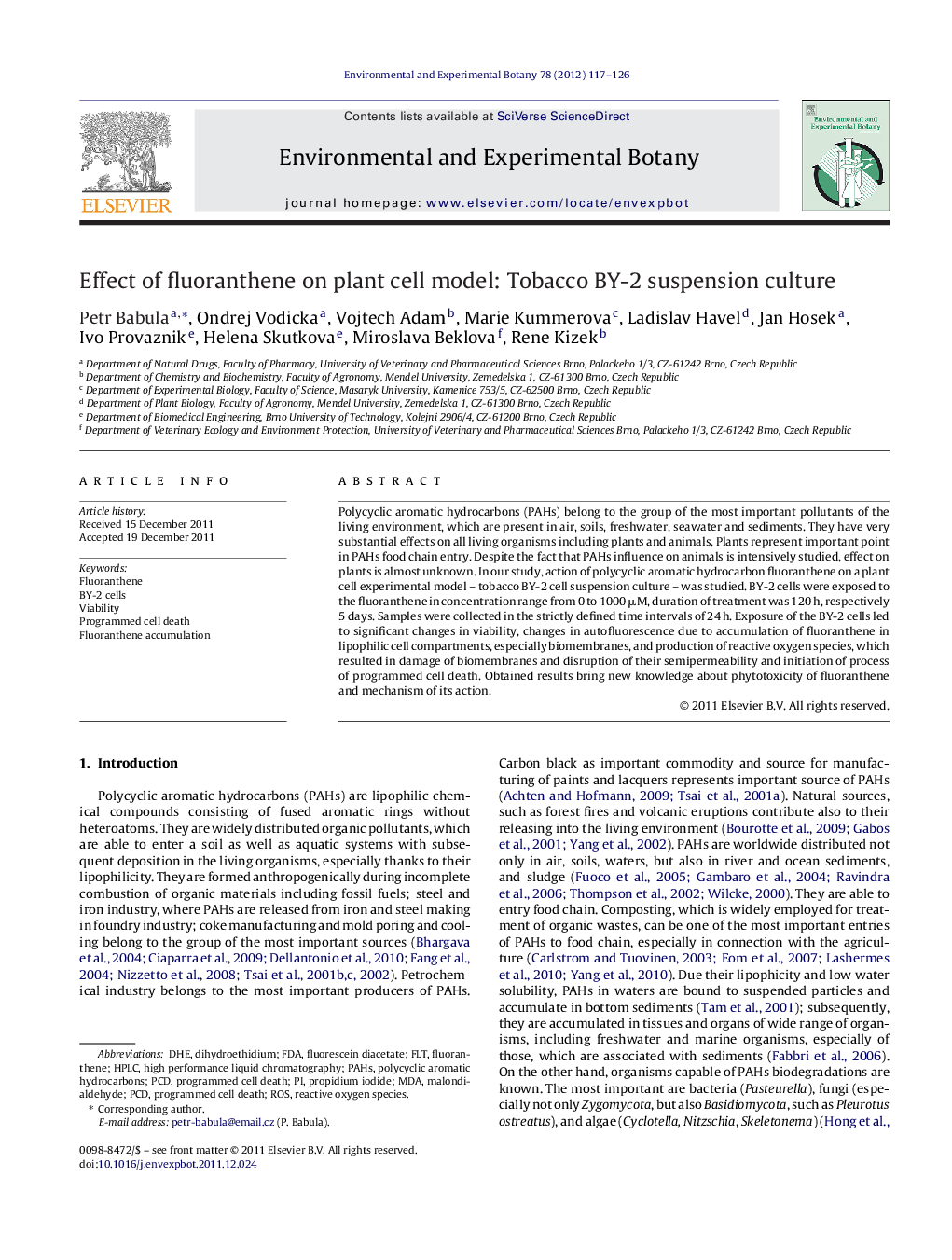| Article ID | Journal | Published Year | Pages | File Type |
|---|---|---|---|---|
| 4554744 | Environmental and Experimental Botany | 2012 | 10 Pages |
Polycyclic aromatic hydrocarbons (PAHs) belong to the group of the most important pollutants of the living environment, which are present in air, soils, freshwater, seawater and sediments. They have very substantial effects on all living organisms including plants and animals. Plants represent important point in PAHs food chain entry. Despite the fact that PAHs influence on animals is intensively studied, effect on plants is almost unknown. In our study, action of polycyclic aromatic hydrocarbon fluoranthene on a plant cell experimental model – tobacco BY-2 cell suspension culture – was studied. BY-2 cells were exposed to the fluoranthene in concentration range from 0 to 1000 μM, duration of treatment was 120 h, respectively 5 days. Samples were collected in the strictly defined time intervals of 24 h. Exposure of the BY-2 cells led to significant changes in viability, changes in autofluorescence due to accumulation of fluoranthene in lipophilic cell compartments, especially biomembranes, and production of reactive oxygen species, which resulted in damage of biomembranes and disruption of their semipermeability and initiation of process of programmed cell death. Obtained results bring new knowledge about phytotoxicity of fluoranthene and mechanism of its action.
► Fluoranthene as cytotoxic compound tested on BY-2 cells. ► Fluoranthene deposition and accumulation in cells were demonstrated. ► Changes in cell viability as well as apoptotic changes were detected. ► New knowledge about cytotoxic action of fluoranthene on cell model BY-2.
